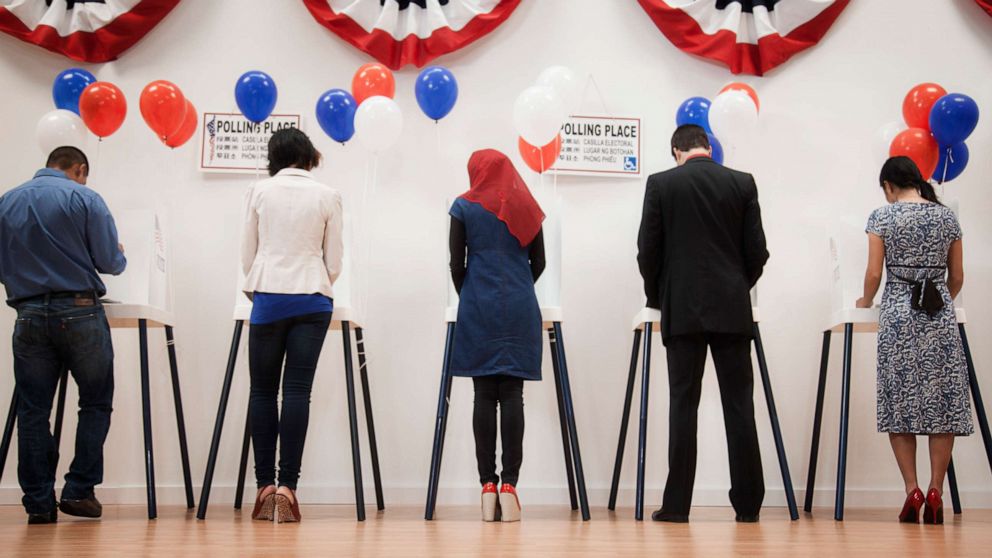2020 presidential nominating contests explained

Throughout the nominating process, the presidential candidates are jockeying for delegates, since votes in primaries and caucuses are actually votes to elect delegates to each party's convention. But the similarities between the Democratic Party's process and that of the GOP end there, with each side operating under their own rules to select a nominee for president.
Here's a breakdown of the Democratic party's process:
The Democratic candidates in the presidential contest are competing to secure a majority of pledged delegates to win the nomination at the convention, which will be held in July in Wisconsin. Pledged delegates are awarded to candidates based on district or statewide results and are bound to support the candidate to whom they are allocated. Technically, however, pledged delegates are not legally bound to support a particular candidate but are often loyalists who expected to do so. Each candidate is aiming to reach the magic number - the total number of pledged delegates needed to win the nomination and become the presumptive nominee ahead of the convention - which is 1,991.
But if no contender nabs a majority of pledged delegates through the Democratic primary process, there could be a contested convention that will require multiple ballots and the inclusion of "superdelegates" to determine the nominee.
The last time a contested convention required multiple ballots was 1952. The rules in that scenario are slightly different, mainly since a group of party leaders and establishment figures who are not pledged to individual candidates – also known as "superdelegates" – will have the chance to vote on a second and any subsequent ballot to pick the nominee. While their role has been reduced since the 2016 presidential election, superdelegates could ultimately sway the outcome of the nominating process if their votes are needed. To win the nomination if superdelegates are voting, a candidate would need to secure 2,375.5 total delegates at the convention.
Here's a breakdown of the Republican party's process:
For the GOP contenders, including incumbent President Donald Trump, the goal of the primary process is to secure a majority of delegates in order to win the nomination at the convention, which will be held in August in Charlotte.
In the series of primary and caucuses held throughout the first half of the year, the Republican candidates are vying for a majority of delegates, with the magic number to win the nomination standing at 1,236. Delegates in the Republican contest are mostly bound to vote based on the statewide or district-level results in their state, but a small number of delegates up for grabs in the Republican contest are "unpledged" or "unbound" are free to vote for any candidate, regardless of the caucus or primary results in the state. The rules for binding or not binding delegates to vote for a specific candidate at the convention vary from state to state.
If a candidate does not secure a majority of delegates to become the presumptive nominee during the Republican primary process ahead of the convention, the August meeting will make a critical difference in who the nominee will be. The delegates at the convention will go through multiple rounds of voting until a candidate secures a majority to win the nomination. As the vote moves through the rounds, more and more delegates become free agents to vote for their choice candidate.
This is not a likely scenario, since both of Trump’s primary challengers are long-shots and a number of states have cancelled their primaries and caucuses, a move that strengthens the president’s path the re-election.




